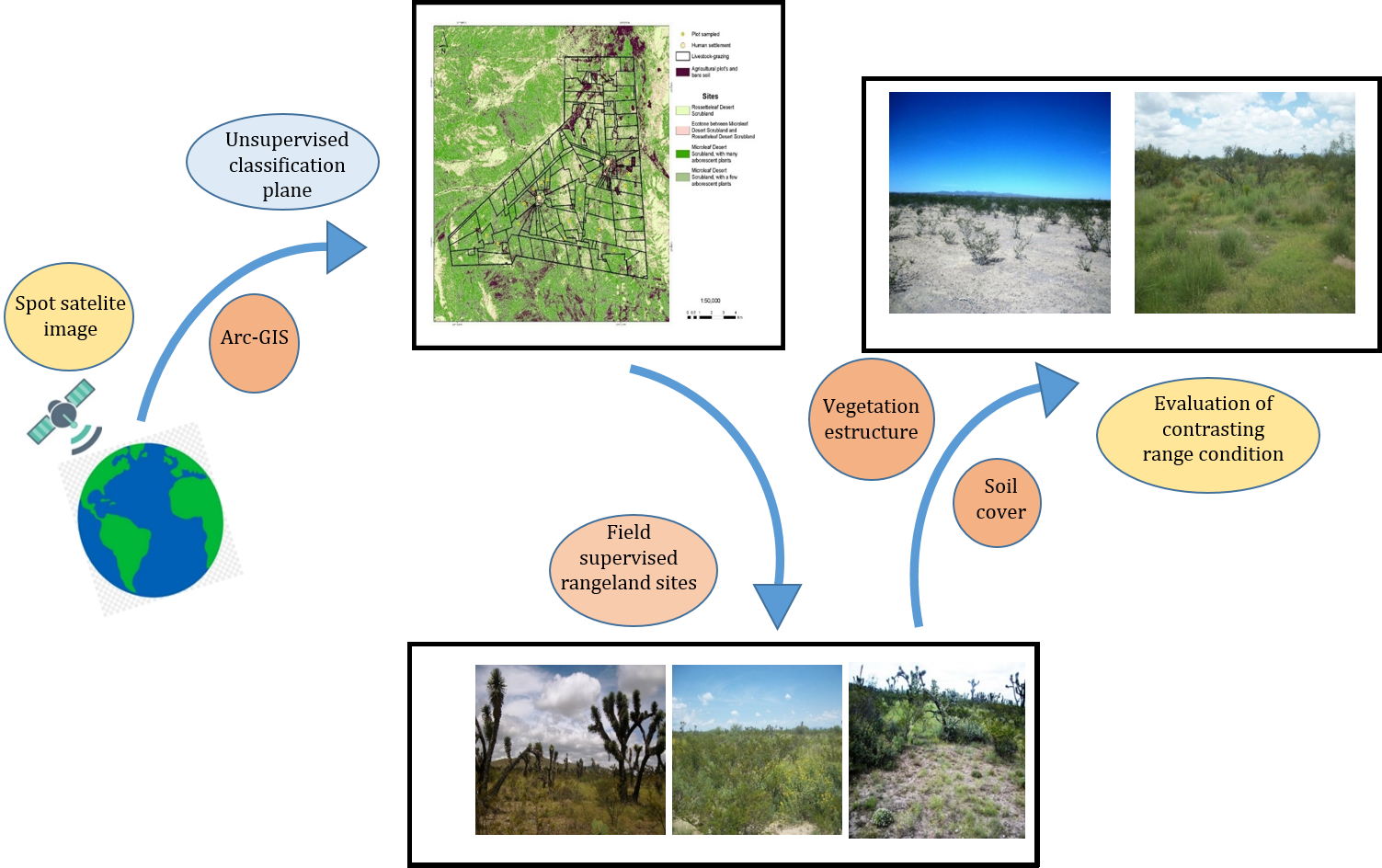Effects of 20 years of parceling on the condition of communal rangeland on a Mexican ejido
Palabras clave:
Agostaderos multiestratificados, sitio de agostadero, análisis multivariable, desertizaciónResumen

This study evaluated the current condition of rangeland on 18 out of 62 plots created in 1993 by parceling the communal rangeland of the El Castañón ejido (Catorce, San Luis Potosí, México). Six plots located in three different rangeland sites were analyzed: two, visually characterized as ‘good’, two as ‘poor’, and two as ‘intermediate’. The density and volumetric biomass of the preponderant perennial species were estimated after grouping them by vital form and forage value. The current state of soil cover was assessed using Canfield’s line intercept method. Estimates of the variables of vegetation structure and soil cover on the plots were then subjected to multivariate analysis (DECORANA). The hypothesis established that the concepts of site and condition of rangeland, developed for climatic grasslands in the USA, are valid for multi-stratified rangelands in the scrublands of the potosino highland. The three sites of rangeland and the visual assessments of their condition were confirmed by the results of the analyses of vegetation and soil cover. After prioritizing 17 characteristics of the 18 plots, we confirmed that the variables density and biomass by groups of species with distinct forage value, and the ratio of bare soil to ground covered with vegetation and mulch, generated adequate evaluations of the condition of these rangelands. The studied plots showed important differences in rangeland condition, after 20 years of parceling and individual exploitation.
Higlights
- The grazing lands in the Mexican ejidos are communal, without clear rules that determine the adequate amount of livestock that can graze a given area, hence there are abuse and deterioration of up to 95% of these lands.
- The ejido "El Castañón y Anexos" was the first in the Potosino highlands that took advantage of the amendment to article 27 of the Constitution in 1993, to parcel out common use areas and manage them individually since then.
- Three rangeland sites were recognized and in each of them two parcels with better condition, two with worst condition, and two with intermediate condition, were evaluated, for a total of 18 studied parcels, out of the 62 resulting from the parcel out process.
- The used combination of vegetation and soil cover variables, were adequate to verify visual gradients from good to fair, and from fair to poor condition, which may allow their application in the evaluation of the condition of rangelands under similar ecological conditions.
- The results obtained after the parcel out process of the communal rangelands of the "El Castañón y Anexos" ejido, may be the basis to stop and reverse the generalized desertification of the grazing lands under social usufruct.
Descargas

Descargas
Publicado
Cómo citar
Número
Sección
Licencia
Aquellos autores/as que tengan publicaciones con esta revista, aceptan las Políticas Editoriales.










.jpg)




